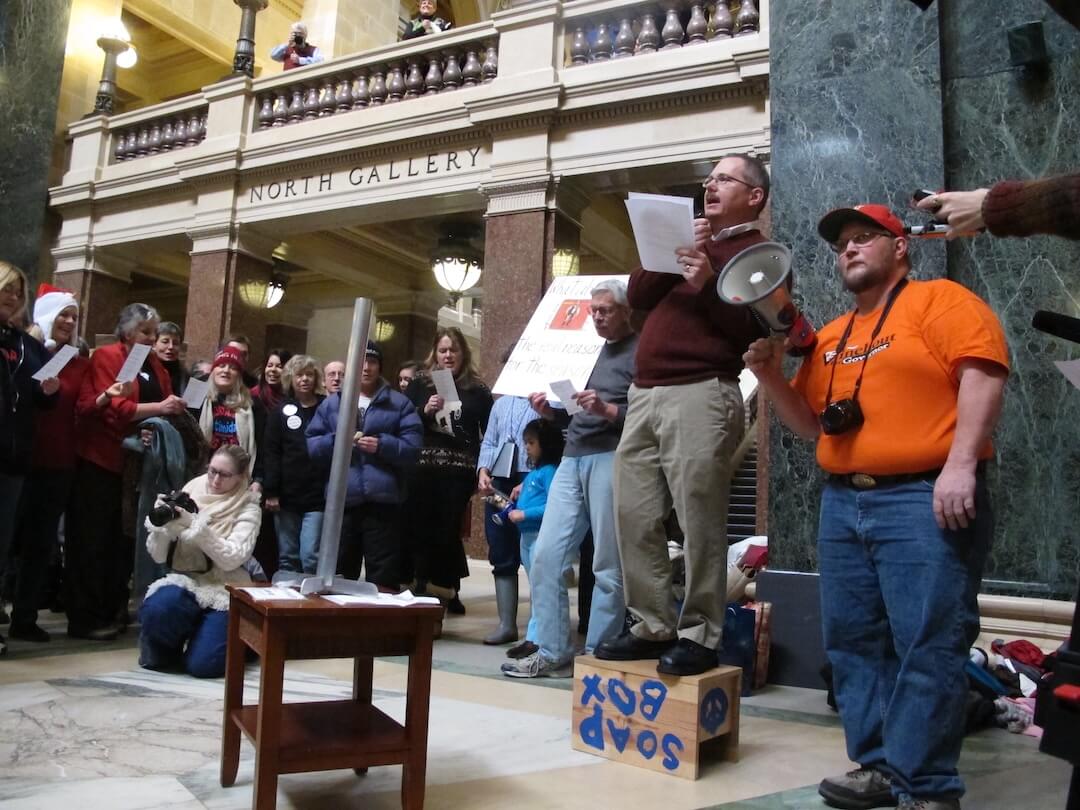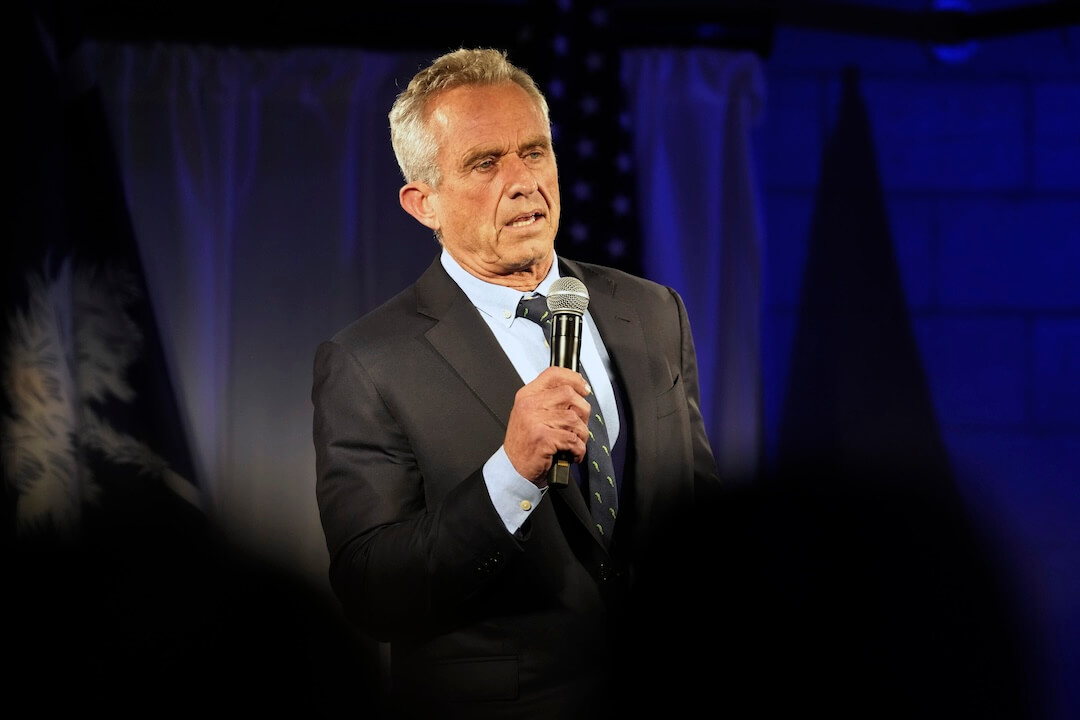The two-room cottage is a shed now, a white-washed place for Jimmy O’Toole to store hay for the livestock, a few pieces of farm equipment, a cupboard, a china cabinet and the family stories that he keeps alive for visitors to Ireland like me.
Gone is the thatched roof that kept the home a wee bit dryer in the raw Irish winter, replaced by a corrugated roof and proper downspouts. Gone, too, are the 11 children whom my great-grandparents raised on this rocky land against the sea – including my grandfather, Coleman, whose decision to leave for America 100 years ago redirected his life and, a generation later, helped shape my own.
I have come here with my wife Donna after talking with her for many of our 38 years together about visiting the home of my ancestors. Now we are standing on my cousin Jimmy’s farm in Tiernee, Lettermore, in County Galway, and walking for the first time on rock-strewn paths that somehow seem familiar, perhaps because one of the most important men in my life walked on them, too, in a far different time.
In the days to come, as I tell friends about my visit to this place, I will confess to feelings I never anticipated I would have. I will think about our legacies and the lasting impact of our choices and about how much where we come from affects what we become. And I will think about our journalism, how context changes everything and the power of stories when we tell them well.
But at the moment, standing in the middle of this postcard in the warm July sunshine, looking out to the sea beyond land partitioned by a dozen stone walls, I am moved by a sensation that I am part of something greater, and ongoing, and deeply personal. I have never been here before, but I have come home.
***
In my work with managers, I look for metaphors that help them connect with the ideas I’m trying to explain. When I teach about optimism, for example, I share my experience with the doctor who told me I had prostate cancer.
In Tiernee and the story of my grandfather’s journey to America, I quickly found metaphors for two ideas I’ve been thinking about lately. One is the importance of context in our storytelling, and I’ll return to that later. The other deals with the need for all of us who manage to become more conscious of the choices we make, and the impact of those choices on others.
Coleman’s decision to leave Ireland, to state the obvious, had a huge impact: He created the opportunity for me to exist. That’s a good metaphor.
Though less dramatic, most management decisions have some level of human impact. Some are significant and we have come to expect them, like when we announce unpaid furloughs, change work schedules or downsize the staff. Think about how our decision to refocus the newsroom on digital journalism requires the staff to master new skills. We know that for some, the impact will be a much-welcomed expansion of their resumes. For others, however, the same decision may accelerate their departure from the staff.
Sometimes, because the decisions seem routine, we underestimate their potential impact. When we do, we risk missing an important opportunity. Think about it. Assigning someone to a new beat can change the direction of a career. Taking time to work with a writer or photographer on a chronic weakness can open the door to new assignments. Confronting staffers about a performance issue — this is no exaggeration — can save their job. These may be routine choices, but their fruits can be very significant.
As I think back on Coleman’s decision to leave his homeland, perhaps forever, I wonder how much he thought about the impact it would have on others. Wondering too much about the possible impact of our choices can sometimes paralyze us from taking action. That’s obviously not the goal. But anticipating the possible impacts, and thinking about how we can respond to them, will help us make choices that avoid consequences we never intended.
***
By 1913, when Coleman boarded the boat to America, the British had ruled Ireland for more than 700 years. They had executed the Irish for the crime of being Catholic; executed or imprisoned them for political activity and evicted them from their farmlands. Oliver Cromwell himself banished the O’Tooles from the lush hills of Wicklow to the rugged coast of Connaught, offering them a choice: “To Hell or Connaught” — confident they would not survive either destination.
Add to the mix the great Potato Famine of 1845-49, and generations of Irish men and women like Coleman found it all but impossible to find hope. Between starvation and emigration, the Irish population that stood at more than 8 million in 1845 was cut, by 1913, nearly in half.
And so it was that of the 11 children born in that two-room cottage in Tiernee, only my cousin Jimmy’s dad, James, remained to take over the farm. The others — Stephen, John, Mary, Henry, Coleman, Mark, Tom, Sarah, Martin and Nora — came to America. Coleman was among those who settled in Baltimore; most of the others went to Pittsburgh. Sarah made a home in Minnesota.
In Baltimore, Coleman built the life he could not have found in Tiernee. He first found work as a fireman on the B&O Railroad, and then in 1922, joined the Baltimore City Police Department. He met and married Nora Nolan, an emigrant from County Mayo, and together they had three children, the oldest being my mother, Margaret. They bought a three-story row home on Ashton Street in southwest Baltimore, then another, and eventually owned four houses on the block. Times were hard, but they had steady work and electricity and indoor plumbing.
And, most importantly, they had hope.
By the time I was born in 1952, Coleman and Nora together had written a classic Irish story of joy and sadness. Their two oldest children, Margaret and Coleman, graduated from high school; Margaret went on to business school and Coleman got a college degree. Margaret got a job at the Westinghouse plant in the neighborhood and, after the war, met and married one of the draftsmen, Al Ward. (My grandfather never embraced my mother’s choice of husbands for a simple reason—he wasn’t Irish. The irony is that my Dad may have been Irish; we just don’t know, and Dad didn’t care to find out.)
But Coleman and Nora also had their heartaches. They buried their youngest child, Thomas, after a truck backed over the 8-year-old boy while he played in the back alley. And then, in 1950, Nora died of breast cancer, leaving alone in the three-story house on Ashton Street a quiet husband who became even quieter.
***
How I wish that my grandfather had told stories. But he didn’t.
Only in the past few years, thanks to cousins who visited Tiernee, did I learn about the two-room cottage and the poverty and the rocky soil that made the use of farm machinery a fantasy. I asked my cousin why he thought Coleman and his siblings spoke so little about their home.
“I think maybe he was embarrassed by it all,” Pat said.
His answer makes me think. Standing against one of the stone walls, looking toward that two-room cottage and imagining the voices of children and the smells of burning turf and whatever was cooking in the pot, I feel many things — but no embarrassment.
I feel admiration. I feel respect. I feel pride.
But it’s all about the context, isn’t it?
In 1913, the farm along the sea at Tiernee was home to struggle and hunger and that damp Irish cold and, worst of all, no promise of change. Those who left may not have created their circumstance, but as he walked aboard the boat that took him to America, I can imagine Coleman feeling determined to leave behind the struggles of his homeland forever.
Unlike Coleman, however, I have my grandfather’s life in America to help me place Tiernee in a very different context. For me, Tiernee still represents struggle — but it represents a struggle overcome. Not just for Coleman, but for his brother and my cousins who persevered on this property — and prevailed. And the storyteller in me knows that I cannot tell you the story of how Coleman O’Toole, like so many thousands of America’s immigrants, overcame great adversity to build a successful life, without telling you about the adversity.
All of this makes me think about the role that context plays in our journalism. How often have our stories lacked the context that helps readers understand the whole story? Do our stories on America’s immigration debate begin and end in a legislative chamber? Or in a vegetable field in California? How often do we take our readers back to the “Tiernees” of Mexico or the Ukraine or Cambodia to create a context that helps explain why people choose to leave families behind and come here?
Do our stories about health care or gun violence or the efforts to save a local arts group include the context necessary for the community to fully understand why the issue matters?
Yes, I wish my grandfather had told me stories — but only if he could have brought himself to talk about life at Tiernee. Then he would have had a great story to tell.
***
Coleman lived to be 90, and he only returned to Tiernee once. In 1962, after retiring from the Baltimore City police force at the mandatory age of 70, he took what was to be a three-month visit home. He returned to Baltimore after three weeks.
“Those people haven’t come an inch since I left,” he told us at the Cunard Line pier in New York.
Indeed, the Ireland that Coleman found on his trip home in 1962 was still poor. Well over half the population was on welfare. Emigration remained a problem. And even though his nephew, Jimmy, had built a lovely home on the farm, Coleman had to walk to bed by candlelight because electricity had not yet reached Tiernee.
“They don’t even have sidewalks,” Coleman said. (And for a man who loved nothing better than to give his sidewalk a good sweep, this was a big problem.)
Today, Ireland has sidewalks and plenty of electricity and thousands of pubs and restaurants to serve the millions of tourists who come each year with their iPhones to photograph the castles and medieval graveyards, rolling hills and rugged mountains, all embraced by a fickle sea.
In many ways, then, a lot has changed over the 100 years since Coleman first left his home.
Or not.
Today Ireland is struggling through a new economic crisis, following an all-too-brief period of explosive growth known as the Celtic Tiger. Beginning in the second half of the 1990s, Ireland was an economic success story, enjoying annual GDP increases that in 1997 reached 21 percent. Today, though, unemployment has risen from 4 to 15 percent and housing prices have fallen more than 50 percent.
The Irish are emigrating again.
Indeed, on the very July day that I am with my cousin, Jimmy, for the first time, hearing stories about cousins I’ve yet to meet, I know that somewhere in Ireland a young man, maybe named Coleman, is about to leave his country in search of work.
In search of hope.
When I think about that young man’s search, I better understand why this visit has touched me. Why I keep thinking about the choices I’ve made and could still make; why I do the work I do, and how I can improve it.
I realize that I, too, am looking for hope.
Even more importantly, Tiernee has helped me remember that my search is not mine alone. It belonged to Coleman before me and to the Colemans still to come. It belongs to refugees from Darfur, political prisoners in Syria, frightened children in gang-controlled neighborhoods in Chicago.
It is a search that connects us all.
It is that connection that gives our journalism the potential to matter. For when the stories we tell help our readers and viewers to connect, personally, with other people — no matter if they live across town or across the world—remarkable things can happen. Laws change. Children are fed. Corruption is punished.
People find hope.
And helping that to happen, to quote an old journalist friend, is an ennobling way to spend one’s life.









